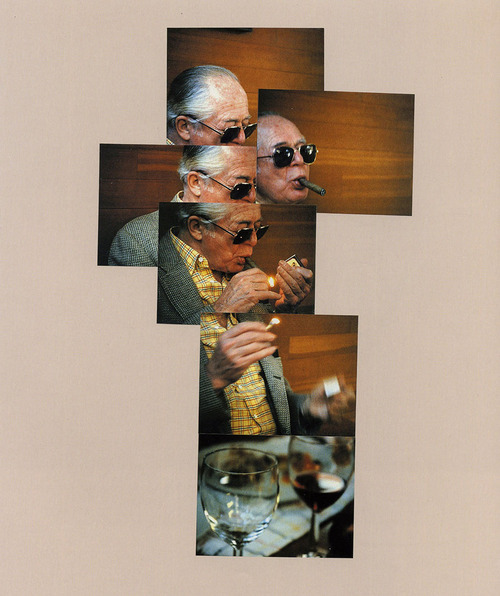David Hockney’s “Joiners”

I’ve written about David Hockney’s “Joiners” before, but Frank Chimero has just posted an essay called “The Web’s Grain” that pointed out a progression in the works that was not clear to me before.
I knew that the photographic collages were Hockney’s response to his ongoing struggle with the space/time limits of photography—
I mean, photography is all right if you don’t mind looking at the world from the point of view of a paralyzed cyclops—for a split second
—which he charmingly drew in these diagrams (on the left, photography, on the right, human perception):

And talks more about in this film:
But what I didn’t realize is that things started to progress once he moved away from using the standard Polaroid film:

Here’s Frank:
Do you see what’s changed? Hockney stopped using Polaroids. The grid is gone, replaced by overlaid, borderless photos. Nothing cut or cropped, nothing tricky. Hockney’s able to do a lot of work with only six images.
This all culminates in The Scrabble Game:

Frank, again:
Hockney began with an image-making practice that relied on the grid necessitated by the Polaroids’ borders and produced a rectangular final work. When he switched to normal film, he was able to overlay images in any necessary shape that accurately described the time and space of a scene. Nobody would set out to make a picture with these edges—what you see is what was required by the images he managed to snap.
Of course, now that Hockney’s making video joiners, he’s back to the grid:

Read Frank’s essay in its entirety, here: “The Web’s Grain”
You can see more joiners in Hockney’s hard-to-find book, Cameraworks.
Filed under: David Hockney


 betzistar
betzistar